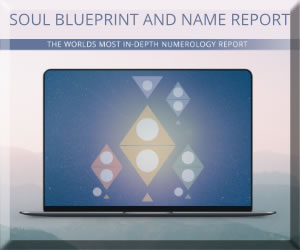
The Sun -The Only Real God
The Sun is a massive, glowing ball of hydrogen and helium gases at the center of our solar system. It’s primarily responsible for Earth’s climate and weather patterns, impacting everything from the tiniest plant to enormous ocean currents. Without it, life as we know it wouldn’t exist. In this article, I will explain why the Sun is regarded as the ultimate source of life, akin to a concept of God, for all living beings on Earth.
Understanding the Sun’s fundamental role in our solar system helps us appreciate its importance. It’s the key driver of photosynthesis, the process by which plants convert sunlight into energy, supporting nearly all living organisms. Additionally, it’s responsible for the water cycle and has a dramatic impact on the Earth’s climate system.
Check out more videos on our YouTube channel
For centuries, humans have looked up at the Sun in awe. Its power and presence have made it a central figure in many mythologies and religious practices. Thus, different cultures have seen the Sun as a deity, providing life, warmth, and sustenance. However, Sun worship isn’t just a relic of the past. Many indigenous cultures today still honor the Sun in their rituals and traditions. This enduring reverence speaks to humans’ deep connection with this celestial body.
Historical Worship of the Sun: Ancient Cultures and Civilizations
Sun worship is present in nearly every ancient civilization, demonstrating the Sun’s universal influence on human history. Ancient peoples observed the Sun’s life-giving properties and integrated its presence into their daily lives and spiritual practices.
In Egypt, the Sun was central to mythology and religion. Deities like Amun, Ra, and Horus represented various aspects of the Sun as God. For instance, Ra, often depicted as a falcon-headed god with a solar disk, journeyed across the sky by day and the underworld by night, symbolizing life, death, and rebirth.
Greek civilization also highly regarded the sun. Helios, the Sun God, was imagined riding his chariot across the sky, bringing light to the world. This imagery reflected the Greeks’ understanding of the Sun’s essential role in the natural order.

The Hellenistic period blended Greek and Eastern philosophies, with the Sun maintaining its divine status. Syncretic deities like Serapis emerged, merging the attributes of Helios with those of other gods, demonstrating the Sun’s integrated role across cultures.
Similarly, the worship of Sol Invictus, the ‘Unconquered Sun,’ grew prominently in Roman culture. This deity symbolized victory, persistence, and eternal light for the Romans, embodying the Sun’s enduring presence and strength.
The sun was also the only real God among the Aztecs, Incas, and Mayans. These civilizations dedicated grand temples and rituals to Sun gods like Huitzilopochtli and Inti, celebrating the Sun’s power to nourish crops and sustain life.
In Japan and China, the Sun also held a divine position. Amaterasu, the Japanese Sun goddess, was a central figure in Shinto belief, embodying light and life. Similarly, Chinese traditions revered the Sun as a Deity with various festivals and lore, acknowledging its crucial role in agriculture and daily life.
Modern Influence of the Sun: From Spirituality to Science
The significance of the Sun hasn’t diminished over time. The Sun still holds a spiritual meaning in many parts of the world. Festivals like the Indian Makar Sankranti or the Winter Solstice celebrations in many cultures are testaments to our enduring reverence. These events remind us of our ancestors’ ways of marking time and of their understanding of natural cycles.
From a scientific perspective, the Sun remains a focal point of study. Solar energy has revolutionized the way we think about and utilize power. Harnessing sunlight through solar panels has brought about advancements in sustainable energy, aiming to reduce our carbon footprint and combat climate change effectively. Besides, this shift towards renewable energy highlights the blend of ancient respect and modern innovation surrounding solar power.
The Book of Wisdom is a must-have book for every free-thinker and truth-seeker. It offers a wealth of knowledge, encompassing both surface-level truths and deep, hidden insights from the esoteric realm.
Modern science has amplified our understanding of the Sun’s behavior and influence. Solar flares and sunspots, once mysterious phenomena, are now studied to predict space weather, which can impact satellite communications and power grids on Earth. This knowledge helps us shield our technology and infrastructure from potentially disruptive solar activities.
Beyond technology, sunlight plays a crucial role in human health. Exposure to sunlight triggers the synthesis of vitamin D, which supports bone health and immune function. There’s also a positive effect on mental health, easing symptoms of seasonal affective disorder and improving overall mood. This modern appreciation of sunlight aligns with the ancient understanding of the Sun as a life-enhancing force.
Additionally, the global climate system is intricately linked to the Sun’s energy. Variations in solar radiation affect weather patterns and climate cycles. By studying these variations, scientists can better predict long-term climate changes, offering critical insights for preparing for future environmental shifts. This connection between the Sun and the Earth’s climate underscores the importance of understanding solar dynamics.
The Sun’s Vital Importance to Human Life
The Sun is paramount to life on Earth. It’s energy fuels photosynthesis, the process by which plants produce food. This not only affects the plants themselves but also the animals and humans who depend on them for survival. A healthy, green planet starts with the Sun’s light.
Sunlight is crucial for human health. Exposure to the Sun helps produce vitamin D, which is essential for maintaining healthy bones and a robust immune system. Regular sunlight exposure also helps improve mental health by regulating mood and warding off conditions like seasonal affective disorder.
The sun’s ecological and environmental importance can’t be overstated. It drives weather patterns, ocean currents, and the water cycle. These elements are interconnected, creating a balanced ecosystem supporting various life forms.

Agriculture flourishes with adequate sunlight. Crops depend on consistent sunlight for growth. This influences economic aspects, as agricultural productivity impacts food supply chains and market stability. Farmers rely on the Sun to grow the food that feeds the planet.
Understanding the Sun’s role helps us better appreciate and protect our environment. Sustainable practices, such as solar energy, help reduce dependence on fossil fuels and mitigate environmental damage. The Sun supports life and shows us the path towards more sustainable living.
Moreover, from the astrological point of view, the Sun is much more than a source of light. It absorbs energy from every planet in the solar system and reflects it toward the Earth. As a result, it affects all living beings, including humans, through the collective psyche and the subconscious mind.
Additionally, people today often take the Sun for granted for religious reasons. Monotheistic religions have historically personified the Sun as God alongside human deities, such as Jesus, Allah, and Surya. However, they will not admit it because of previous pagan beliefs. As a result, many people today overlook the Sun’s significance beyond its role as a source of light and heat. However, the truth is that the Sun is much more than one “lamp” in the sky.
The Hypothetical: Consequences of a Sunless World
Imagining a world without the Sun is daunting. The Sun’s warmth and light are integral to maintaining life on Earth, and its sudden absence would have catastrophic consequences. Furthermore, temperatures would plummet drastically, making survival challenging for most life forms. Without the Sun’s heat, our planet would rapidly freeze, leading to the collapse of its ecosystems. Plants could not perform photosynthesis, disrupting the food chain at its core.
The absence of sunlight would also disrupt the climate systems. Wind patterns and ocean currents, both driven by the Sun’s energy, would cease to function. This would lead to stagnant air and water, further disrupting natural processes.
The Book of Symbolism is more than a guide to ancient signs; it is a journey into your own consciousness. Every chapter is a step on a journey that will elevate your mind and spirit.
After reading this book, nothing will be the same again.
Moreover, human survival would face immense challenges. Agriculture would halt, leading to food shortages. The energy crisis would deepen as reliance on solar power became moot. Societies would be forced to find alternative ways to generate heat and light, potentially turning to less sustainable options.
Technological advancements could provide some solutions, but they might not be sufficient. Artificial habitats, advanced heating systems, and innovative agricultural methods could offer partial answers, but the scale of adaptation required is enormous. Such a shift would strain resources and test human resilience and ingenuity. Envisioning a world without the Sun sharpens our understanding of its unmatched importance. It also emphasizes the need for sustainable living and technological innovations that respect our planet’s natural systems.
Therefore, the Sun is not just a cosmic fixture; it’s the cornerstone of life for all living beings on Earth, including humans. No matter your belief, the Sun was and always will be the only God of life.
Related Topics














